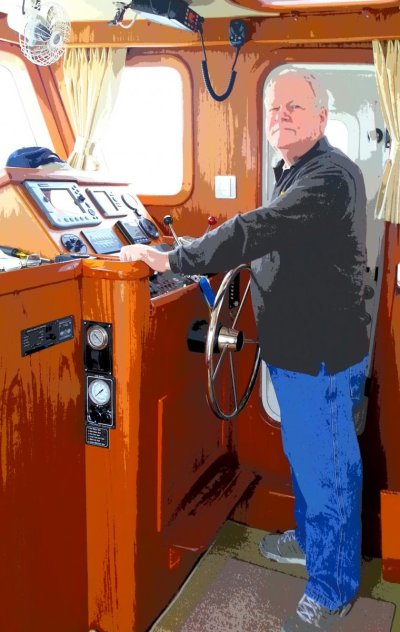Hello,
I'm looking for your opinion on an estimated GPH for this boat.
Cruising 8-10 Knots.
Understanding that fuel cost is only a small expense of owing a boat. We want to do the Great Loop, a 6,000 mile plus trip, and are currently building a budget.
42' Marine Trader
Dimensions
LOA: 41 ft 10 in
Beam: 13 ft 8 in
LWL: 38 ft 0 in
Maximum Draft: 3 ft 6 in
Displacement: 34000 lbs
Engines
Total Power: 450 HP
Engine 1:
Engine Brand: Ford Lehman
Year Built: 1988
Engine Model: SP225
Engine Type: Inboard
Engine/Fuel Type: Diesel
Engine Hours: 1700
Drive Type: Direct Drive
Engine Power: 225 HP
Engine 2:
Engine Brand: Ford Lehman
Year Built: 1988
Engine Model: SP225
Engine Type: Inboard
Engine/Fuel Type: Diesel
Engine Hours: 1700
Engine Power: 225 HP
Cruising Speed: 10 knots
Maximum Speed: 15 knots
I'm looking for your opinion on an estimated GPH for this boat.
Cruising 8-10 Knots.
Understanding that fuel cost is only a small expense of owing a boat. We want to do the Great Loop, a 6,000 mile plus trip, and are currently building a budget.
42' Marine Trader
Dimensions
LOA: 41 ft 10 in
Beam: 13 ft 8 in
LWL: 38 ft 0 in
Maximum Draft: 3 ft 6 in
Displacement: 34000 lbs
Engines
Total Power: 450 HP
Engine 1:
Engine Brand: Ford Lehman
Year Built: 1988
Engine Model: SP225
Engine Type: Inboard
Engine/Fuel Type: Diesel
Engine Hours: 1700
Drive Type: Direct Drive
Engine Power: 225 HP
Engine 2:
Engine Brand: Ford Lehman
Year Built: 1988
Engine Model: SP225
Engine Type: Inboard
Engine/Fuel Type: Diesel
Engine Hours: 1700
Engine Power: 225 HP
Cruising Speed: 10 knots
Maximum Speed: 15 knots
Last edited:

 But just a WAG
But just a WAG

